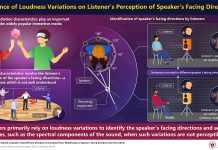
A groundbreaking study by the University of South Australia and Flinders University, recently published in Research in Autism Spectrum Disorders, unveils an innovative method for diagnosing Autism Spectrum Disorder (ASD) in children.
This method, which combines a simple eye test with artificial intelligence (AI), could revolutionize the way ASD is identified, offering a faster and more accurate diagnosis.
The study utilizes an electroretinogram (ERG), a test that measures the retina’s electrical response to light. The researchers applied AI to distinguish unique retinal responses in children with ASD, involving 217 participants aged 5–16, including 71 with ASD and 146 without.
They discovered that a single bright flash of light to the right eye elicited distinct retinal responses in children with ASD, differing from those in neurotypical children.
The AI’s analysis highlighted that higher frequency components of the retinal signal were diminished in children with ASD. This finding presents a potential biomarker that could be used for screening with high accuracy in the 5–16 age group.
ASD, a neurodevelopmental condition, affects social interactions, communication, and can include repetitive behaviors.
In Australia, about 1 in 70 people are on the autism spectrum, with a higher prevalence in boys than girls. Globally, the prevalence varies, with estimates of 1 in every 100 children.
Dr. Fernando Marmolejo-Ramos from UniSA sees this test as a breakthrough in ASD diagnosis, potentially expediting support for thousands of children.
Traditional diagnostic methods involve lengthy psychological assessments, but this new test significantly reduces the time and resources required, completing screenings in as little as 10 minutes.
The RETeval electroretinogram testing unit used in this study is non-invasive and well-tolerated by children, making it a more practical option for both children and their families.
The simplicity and efficiency of this test alleviate the stress and financial burden often associated with obtaining an ASD diagnosis.
Flinders University researcher Dr. Paul Constable emphasizes the significance of exploring the eye-brain connection in understanding brain development in people with ASD.
This approach opens new avenues for using electroretinogram and machine learning in classifying ASD with greater accuracy.
Dr. Hugo Posada-Quintero from the University of Connecticut plans to extend this research to younger children and those with other conditions like ADHD, to determine the specificity of this test.
This study marks a significant advance in the field of neurodevelopmental research, demonstrating the potential of retinal response analysis combined with AI and machine learning techniques.
With further research and technological advancements, this method could evolve into a practical tool for clinicians, enhancing the screening and diagnostic process for ASD and related disorders.
If you care about autism, please read studies that cats may help decrease anxiety for kids with autism and new study may develop better treatment for autism
For more information about health, please see recent studies about how to eat your way to a healthy brain, and results showing this type of food may contribute to autism.
The research findings can be found in Research in Autism Spectrum Disorders.
Copyright © 2023 Knowridge Science Report. All rights reserved.



